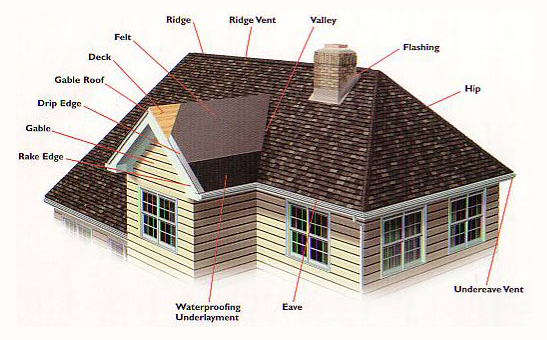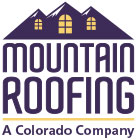Help Center
Frequently Asked Questions
Q: What are the components that make up a Composite roof?
A: Roofs vary but in general, here are the parts of a roof:
Rake Edge – The vertical edge of gable style roof planes.
Gable – A traditional roof style; two peaked roof planes meeting at a ridgeline of equal size.
Drip Edge – An installed lip that keeps shingles up off the deck at edges, and extends shingles out over eaves and gutters, and prevents leaks.
Deck – The substrate over which roofing is applied. Usually plywood, wood boards, or planks.
Felt – Often called tar paper this heavy felt paper (synthetic materials are available as well) is placed on top of the decking before the roofing material is installed to offer an additional layer of protection from moisture.
Ridge – the highest point of the roof that runs the length of the roof. Ridge Vent Hard plastic ridge vent material.
Valley – When two sections of the roof slope downward and meet, they create this third element – a valley.
Flashing Materials used to waterproof a roof around any projections – Pieces of metal used to prevent the seepage of water around any intersection or projection in a roof, such as vent pipes, chimneys, valleys, and the joints at vertical walls.
Hip – The high point where two adjoining roof sections meet.
Eave – The roof edge from the fascia to the structure’s outside wall. In general terms, the first three feet across a roof is termed the eave.
Waterproof Underlayment – Modified bitumen based roofing underlayment designed to seal to wood decks and waterproof critical leak areas.

Q: What are the warning signs I may have a roofing issue?
A: Roofing issues usually are discovered after leaking or other serious damage occurs due to weather. Annual inspections often can uncover cracked, warped or missing shingles; loose seams and deteriorated flashings; excessive surface granules accumulating in the gutters or downspouts. Indoors, look for stains on the ceiling, cracked paint, discolored drywall, and peeling wallpaper as signs of damaged roof areas.
Q: How long does it take to replace a roof?
A: Replacing a roof is labor-intensive and depending on the type of roof, could take anywhere from a few days to two weeks. The time involved is substantially affected by the weather. Wind, snow, rain, or even just the threat of one of these may slow the process considerably.
Q: Will my homeowner’s insurance policy cover the cost of a new roof?
A: Whether or not your insurance company will agree to replace your roof depends on your insurer and the terms of your policy. Generally you are covered if your roof sustains wind damage from turbulent weather, hail damage or other similar events. General wear and tear is not usually covered.
Q: What is ice and water-shield underlayment?
A: Ice and water-shield underlayment is a continuous membrane installed under your roofing shingles in areas subject to ice damming. It prohibits water that might get under your shingles from reaching your wood structure.The most common places for this membrane are along your gutter lines, in your valleys, along any walls, around your chimneys and skylights.Ice and water-shield is not required in all Colorado municipalities.







